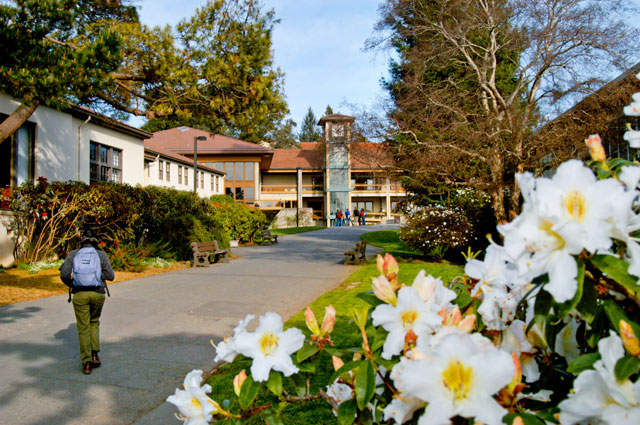
The report, compiled by Kim Vincent-Layton in the College of Natural Resources and Sciences, shows that close to 70 percent of participating faculty reported significant-to-moderate progress in learning impacts following the Institute’s two-day conference last spring on new educational strategies. Nearly 50 percent of staff attendees reported comparable advances in such areas as outreach, non-academic skills and responsiveness to student needs.
About 150 staff and faculty combined took part in the 15 sessions and workshops last May. Vincent-Layton’s report was based on a survey mailed in November to all attendees.
The Institute’s spring conference, coupled with a trio of book circles, pulled together a variety of strategies and resources to meet the changing learning needs and diverse backgrounds of 21st-century students. The strategies are designed to foster peer mentoring, inclusive classrooms, campus jobs and internships, family engagement and community partnerships. All are geared to a deeper understanding of students’ needs, irrespective of their backgrounds.
Instead of traditional classroom lectures, the new models embrace cooperative or team-based learning, group assignments, student-led labs and student worksheets. The emphasis is on continuous engagement and inclusive classroom interaction, not only between professors and students, but also among students.
One technique is breaking a class into small groups, which enables students to solve problems together. They exchange and dissect ideas with their peers and sharpen each other’s critical thinking skills in real time in the classroom.
Technology also has an important role in meeting current educational needs. Effective teaching, for example, can be measured in part with clicker devices. Students press a button to answer on-the-spot quizzes electronically, giving them and their professor instant feedback on whether concepts are being correctly and fully understood. This kind of application helps to ensure students are thinking about the material as they are actually going through it, rather than listening to a lecture passively, minus any interaction with each other or the teacher. Snap quizzes also buttress retention of course material.
The new approaches center on critical thinking skills, active problem-solving, purposeful sequencing of assignments and expanded out-of-class activities, including extracurricular pursuits that reinforce classroom and undergraduate research experiences.
Faculty acquainted with alternative teaching methods endorse them. HSU Biological Sciences Chair John Reiss and Biological Sciences Professor Mark Wilson praise the new models for their focus on teaching students to understand conceptually how to approach problems and develop knowledge themselves. They were named Fellows in the Life Sciences 2011-2012 by the National Academies in Education for being in the forefront of active learning techniques.
Alternative teaching methods take into account the human mind’s limited short-term memory. Research suggests that learners retain about seven items at once. Even these will be remembered for only a few minutes unless time is allowed for assimilating material and fully absorbing it. Methods include starting a lecture with a question or problem. This encourages students to share their thoughts and solutions with one another and come up with ideas of their own spontaneously. The group approach also fosters inclusion.
Staff picked up tips at the Institute’s spring workshops on providing better access to information, student teaming, peer mentoring, student assistant training and balancing coursework with job responsibilities, among others. One of the seminars dealt with cultural considerations in supporting American Indian students. Another addressed approaches to teaching online.
Humboldt State’s Institute for Student Success evolved from the prior Center for Excellence in Learning and Teaching (now decentralized to the three colleges) and several other institutes. It has a broadened mandate to serve staff, faculty and administrators alike.
Breadth is the overarching objective. “No matter what your role is on campus, you play some part in supporting students and their success,” says Vincent-Layton. “Whether you work in Plant Operations or you’re the President or a teacher in the classroom, we all directly or indirectly touch students. That was our goal in putting together this Institute: to ensure everyone shares in supporting students whatever their role is at HSU.”
The Institute is an adjunct of the President’s Office, Academic Programs, the Office of Diversity and Inclusion, the Faculty Development Office, Information Technology Services and the Learning Resource Network.
The May 2012 Institute will be organized and presented collaboratively by Humboldt State’s three colleges: Natural Resources and Sciences; Professional Studies; and Arts, Humanities and Social Sciences; and by the University Library, the Office of Diversity and Inclusion, Faculty Development and Human Resources.
Sponsorship will be provided by the President’s Office and the Office of Diversity and Inclusion.
Reports and details are posted at humboldt.edu/institute.